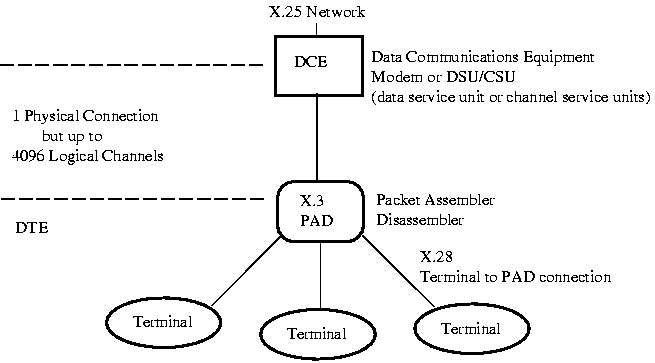| Introduction to Data Communications | ||
|---|---|---|
|
|
62a. X.25 OSI Layers | Next |

X.25 consists of 3 layers:
In actual fact, pure X.25 only defines the DTE to DCE connection but when we talk about the X.25 Packet Switching Network we talk about the above 3 layers.
X.25.1 is the Physical layer and is uses 4 flavours of medium (similar to the multiple Ethernet flavours: 10BaseT, Thinnet and Thicknet). The X.25 packet is carried on serial data lines.
X.25.2 uses HDLC & LAPB for the Data Link layer. LAPB is considered a subset of HDLC. Both are similar to IEEE-802.2 LLC (Logical Link Control) and provides 2 way communications. The B in LAPB stands for balanced communications and is another way of saying Full-Duplex - both sides communicating at the same time. The X.25 packet is carried within the LAPB frame's info field similar to how the LLC packet is carried within the MAC frame's info field.
X.25.3 is known as SNDCF or Subnetwork Dependant Convergence Function. X.25 uses IP network addresses and is one of the reasons for the high overhead.
X.25 connects to the network using a DCE modem or DSU/CSU (Data Service Unit/Channel Service Unit). X.25 allows 4096 logical channels to be connected on 1 physical connection. The Packet Assembler/Disassembler (PAD) connects the DSU/CSU to the DTEs (user devices) which can be terminals or LANs.
The X.3 standard governs the operation of the PAD and the X.28 standard governs the operation of the PAD to terminal connection. The X.29 standard defines the End to End communications from DTE to DTE through the X.25 Network.

| Introduction to Data Communications | ||
|---|---|---|
|
|
Table of Contents | Next |